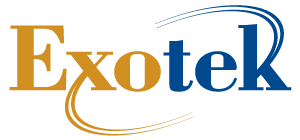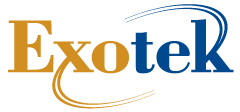Vendor Insights
We compile the latest vendor releases and our own insights based on the information referenced and interactions with Exotek clients and the SI community.
Rockwell Automation Specific Takeaways
Summary
Rockwell closed its fiscal year with a solid Q4, but the drivers of growth point more to short-cycle, product-oriented demand than to a broad rebound in capital projects.
- Q4 sales up 14% (13% organic), fueled primarily by faster-turn product upgrades and “off-the-shelf” orders.
- Full-year sales up just 1%, reflecting a flat macro environment despite a strong finish.
- Software & Control segment +31%, offset by a 4% decline in Lifecycle Services.
- ARR up 8% year over year, underscoring steady digital and connected-service adoption.
- Free cash flow more than doubled to $1.36 billion, reflecting disciplined execution.
- FY 2026 guidance: 2–6% organic growth, with a soft first quarter expected.
Observations
Rockwell’s Q4 performance highlights the company’s strength in navigating a cautious market, but the underlying mix of demand shows that growth is coming mainly from short-cycle, product-driven orders rather than large-scale capital projects.
- Short-cycle orders driving momentum. The strongest gains are in faster-turn upgrades and product refreshes—work that can be justified on efficiency or maintenance grounds. System integrators should emphasize projects that deliver measurable ROI within existing facilities, not major new-plant investments.
- Large projects still deferred. Broader manufacturing uncertainty and tariff concerns are keeping multi-million-dollar system projects under heightened scrutiny. Expect extended approval cycles and smaller initial project scopes.
- Productivity remains the top customer priority. Manufacturers are focusing on getting more from existing assets—particularly in warehousing, automotive, and life sciences—creating demand for modernization, analytics, and control-system upgrades that improve throughput and reliability.
- Lifecycle and services work under pressure. The continued decline in service revenue suggests customers remain cost-conscious, stretching maintenance intervals and prioritizing uptime over major overhauls.
- Macroeconomic caution shaping spend. Capital discipline and uncertainty around policy inputs—such as tariffs, labor, and energy—are steering investment toward short-term efficiency gains over transformative projects.
Bottom line:
Rockwell’s strong Q4 underscores steady demand for incremental productivity and modernization work, but it does not yet signal a broad rebound in capital expansion. For system integrators, opportunity lies in fast-payback automation upgrades, digital productivity tools, and U.S. capacity expansions—particularly in logistics, automotive, and pharmaceutical markets.
Other Vendor Specific Takeaways
Summary
Schneider Electric – reported continued strength in Q3, with ~9% organic growth led by strong performance in North America (+15%) and renewed expansion in Industrial Automation (+6%). Growth was fueled by data center investment, energy transition projects, and systems-led digital services. Full-year targets were reaffirmed at 7–10% organic growth and 10–15% EBITA expansion.
Emerson Electric – posted a steady finish to FY 2025, with Q4 sales up 5% and full-year growth of 3%. Its Intelligent Devices segment (+4%) remained solid, while Software and Control Systems continued to expand margins and recurring revenue. Free cash flow rose 12%, and the FY 2026 outlook calls for 2–4% underlying growth, signaling a stable but subdued demand environment.
Siemens AG – Closed FY 2025 with 6% comparable revenue growth and record free cash flow of €10.8 billion, reflecting solid operational execution but slower order intake late in the year. Its Digital Industries and Smart Infrastructure segments continue to drive performance, with FY 2026 guidance of 5–10% growth and a renewed push around the Xcelerator digital-twin and AI ecosystem. Order growth moderated in Q4, suggesting customers remain selective and cautious with large capital programs heading into 2026.
Vendors continue to emphasize software-driven value and digital transformation, but with tempered growth expectations heading into 2026.
Observations
Other key industrial equipment vendors remain stable, profitable, and strategically focused on digitalization and systems integration.
- Systems-led demand remains strong. Schneider’s results confirm that system-level projects—especially data centers, electrification, and digital services—continue to outpace component-only demand. Integrators that can design and deliver integrated, multi-technology systems will capture the most growth.
- Digital and software capabilities lead. Emerson’s performance underscores ongoing traction in control software, analytics, and instrumentation. Integrators who can connect these layers into predictive or performance-oriented architectures will find steady opportunity even in a flat market.
- Moderate growth, not acceleration. Both vendors point to mid-single-digit expansion heading into 2026—healthy but not exuberant. Expect projects to be selective, ROI-driven, and shorter in cycle time.
- Vertical concentration continues. Schneider’s strength in data centers and Emerson’s focus on process and hybrid industries highlight that integrators should lean into vertical specialization—knowing their sector inside and out will matter more than general automation capability.
- Cash discipline favors partners with execution strength. As OEMs hold tight on cost, they’ll prioritize reliable partners who can execute efficiently and extend their reach in local markets.
Growth opportunities for SIs will come from complex, digitally enabled projects—particularly in infrastructure, energy, and process verticals—where manufacturers value partners that bring both technical integration skills and business impact.




